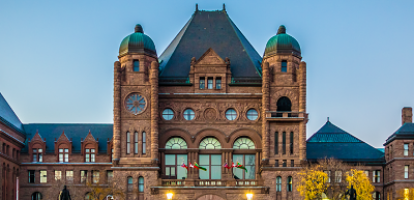From: Benjamin Dachis
To: The Honourable Kathryn McGarry, Minister of Transportation for Ontario
Date: January 31, 2018
Subject: Bring Cities Back to the Table at Metrolinx
There have been many ideas tossed around about changing who does what in Toronto transit. Some people even think an enlarged Metrolinx, the provincially run regional transit body, should take away local control and operate all transit in Toronto.
But a better answer would be to bring cities back to the table at Metrolinx, so that the region can get the best of both regional integration and local control.
Originally created in 2007, Metrolinx was started with the intent of creating a regional transit plan for the Greater Toronto Hamilton Area with a board made up of local government officials. Two years later, Metrolinx was given GO Transit, the regional rail and bus system that carries 250,000 passengers a day. The province then removed the local government officials from the Metrolinx board, which is now entirely made up of provincial appointees.
Metrolinx now faces many difficult decisions. Foremost is integrating regional and local transit fares. Other problems keep coming up such as which projects to prioritize, who should operate new lines, and how to pay for it all.
How can the region overcome local opposition while finding a way to act in the regional interest? The first step is for the province to restore municipal governments to the board. The current board lacks the accountability that politicians would have if they failed to deliver on transit promises.
However, an all-politician board would have no transit-specific expertise. The province can solve that problem by having a combination of elected officials and experts on the board. It can then create subsidiary operations to Metrolinx that, while reporting to the overall board, have area-specific expertise. For example, there could be a corporation with a mandate on planning and capital investment. Another company could specialize in buses. Another for heavy rail.
Some of the largest transit investments now underway would fit this model nicely. For example, the new Eglinton Crosstown LRT line will be owned by Metrolinx. However, it has signed a 10-year agreement with the Toronto Transit Commission (TTC) to operate it. If the TTC operated more routes like this under contract to Metrolinx, the TTC would be able to operate its routes just as it does today. It could also expand its operations outside Toronto if it can prove it’s the best operator for the job. That could result in more jobs at the TTC.
There are great examples Toronto can look to. One model to follow is Transport for London, which operates transit in the UK’s largest city. Its board is chaired by the Mayor of London and includes diverse representation, including workers, disability advisors, and industry experts.
But, we don’t have to look internationally for such a model. In Vancouver, a Mayor’s Council made up of representatives from each of the region’s 21 municipalities appoints most of the board of TransLink, the regional transit coordinating body. TransLink has many subsidiary companies that operate transit services under contract. The contracting allows cities the flexibility to own and operate their own bus system, if they like, as West Vancouver does, or supplement TransLink-mandated services.
Vancouver’s system isn’t perfect. The Mayor’s Council is looking to put more local politicians on the board of TransLink. The beauty of the British Columbia model is that it doesn’t create a new layer of government. The regional transit body is the regional coordinator, not the regional authority.
We don’t need to go back to the early days of Metrolinx’s board to get transit right in Toronto. However, a balance between local accountability and expertise from transit experts will help put the right projects in the right places.
Benjamin Dachis is Associate Director of Research at the C.D. Howe Institute.
To send a comment or leave feedback, email us at blog@cdhowe.org.





